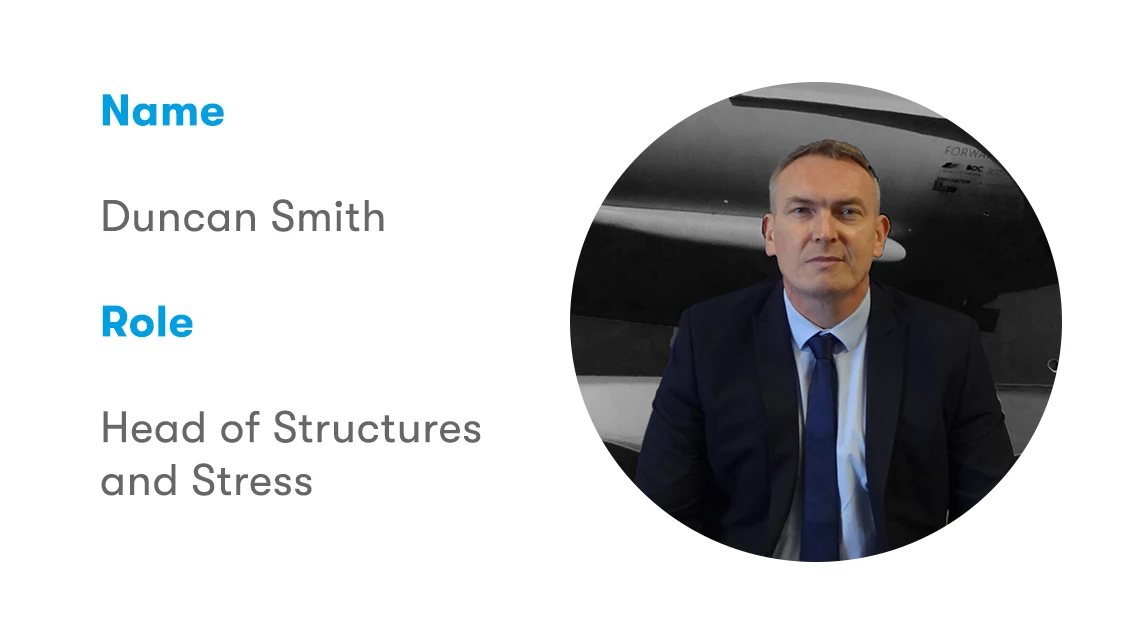What does a normal day at Hybrid Air Vehicles (HAV) consist of for you?
My day is spent liaising with a variety of the great engineers and programme managers to work on improving the performance, with respect to cost, of a baseline air vehicle structural standard. This involves integrating with the supply chain, design houses and our internal engineering team to get the best solution for Airlander. One moment I can be talking about fitting an engine in the aircraft and the next it’s about how I am going to build the payload module.
What enticed you into a career in engineering?
I’ve always been interested in aircraft and while studying in Edinburgh I particularly like the applied engineering elements of my mathematics degree. When I left university I was accepted for a number of roles but it was an aerospace engineering role that I took.
Tell us about your first engineering role.
I started my career in 1989 with a large aerospace company as a Junior Stress Engineer. I always knew I wanted a career in the aerospace industry. I worked on a variety of different programmes such as the new Eurofighter platform, looking at Carbon Fibre Composites and metallic design.
During the start of my career I took on an exciting opportunity to circulate around different disciplines. In a two-year period, I was doing detailed design drawing clearance, check stress, loads generation and weight optimisation of the Typhoon CFC wing. I also managed to spend six months in Munich doing Nodal Load provision for the Typhoon Fighter.
What is the most exciting part of your job?
The most exciting part of my job is when you sign off an airframe to fly and you get to watch the parts and structure that you and your team have designed, built and certified flying around and satisfying a customer’s needs.
What brought you to HAV?
I was made aware of an opportunity at HAV which provided a different technical challenge to my previous experience. This, together with the prospect of being part of a team involved in developing a world class product early in its lifecycle led me to apply. However, the main influencing factor was the enthusiasm and passion that I experienced in the first three hours of meeting an element of the engineering team during my interview. I liked what I heard and during the drive home I thought, if the guys are interested in my skillset then I’m seriously interested in the role.
What makes working in an engineering role at HAV different to other places you have worked?
The role has the potential to offer a full through-life product development experience in what is a niche aircraft programme. An opportunity I have not experienced in any other roles. Also the deviation from my fixed wing background and the significant learning opportunities and challenges like no other make this a very different role for me.
Favourite part of working at HAV?
I like the motivation of the team and the range and depth of skills of the people that yield quick decision making on the best way forward.
Favourite piece of engineering ever?
As a kid I used to sail under the Forth Rail Bridge and that was engineering for me. They can build longer and higher, but they will never outdo that.
From an aerospace perspective the DH Mosquito. It’s amazing what you can do with a couple of Merlin engines and some wood.
What excites you most about the Airlander project?
To be part of a team that is on the cusp of producing an aircraft that has such high functional and financial potential is very exciting indeed.
Any advice for the young engineers of tomorrow?
Don’t leave your career to ebb and flow with the demands of a business. Understand what excites and motivates you personally, lay some basic plans and most importantly act on them to achieve your goals.


